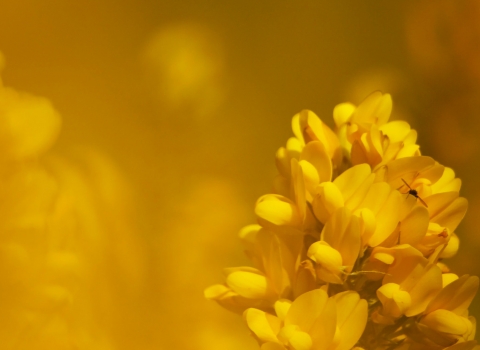
Lake at Baker's Pit. Image by Ben Watkins
Location
From the A30 at Crowlas, head west on the B3309 and continue to the junction at the top of the hill. Turn right onto the B3311 and continue until the road drops into Nancledra, then turn left towards Georgia. After a few hundred yards, turn left, then left again (sign-posted to Georgia). Pass Georgia Farm and follow the road, which becomes a track. There is a pull-in on the righthand side, with room for two or three cars.
View on What3Words
Know before you go
Dogs
You must keep your dog on a lead of no more than 2 metres long on open access land between 1 March and 31 July (to protect ground-nesting birds) and at all times around livestock.
When to visit
Opening times
Open at all timesBest time to visit
April to AugustAbout the reserve
Baker’s Pit is home to a wealth of wildlife and archaeological features, including the remains of 18 Bronze Age roundhouses, which would have provided homes for people who farmed here 4,000 years ago.
Also present are several reminders of the site’s more recent history as a china clay works (1758–1942). Several structures designed for drying clay, an engine house and the clay pit itself can be found around the site.
Various wildlife typically associated with heathland can be found at the reserve, including common lizards and adders, both of which will bask in the sun during
spring and early autumn, before darting for cover should they feel threatened.
Between June and September, you may spot the grayling, a butterfly often associated with heathland. The grayling has a wingspan of 55 – 60mm and rests with its wings closed and forewings tucked behind its hindwings, making the butterfly appear smaller. The underwing is a mottled brown, making it hard to
spot when resting, but when in flight, it will display pale yellow-orange bands and eye spots.
The reserve is also an important site for numerous birds. Whitethroats visit regularly in summer (having flown from sub-Saharan Africa), while merlins, hen harriers and peregrines all visit during winter months. In late summer, much of the reserve bursts
with vibrant yellow as western gorse (one of two gorse species found in Cornwall)
flowers. Western gorse is important for various insects and birds, including the
stonechat and linnet.








